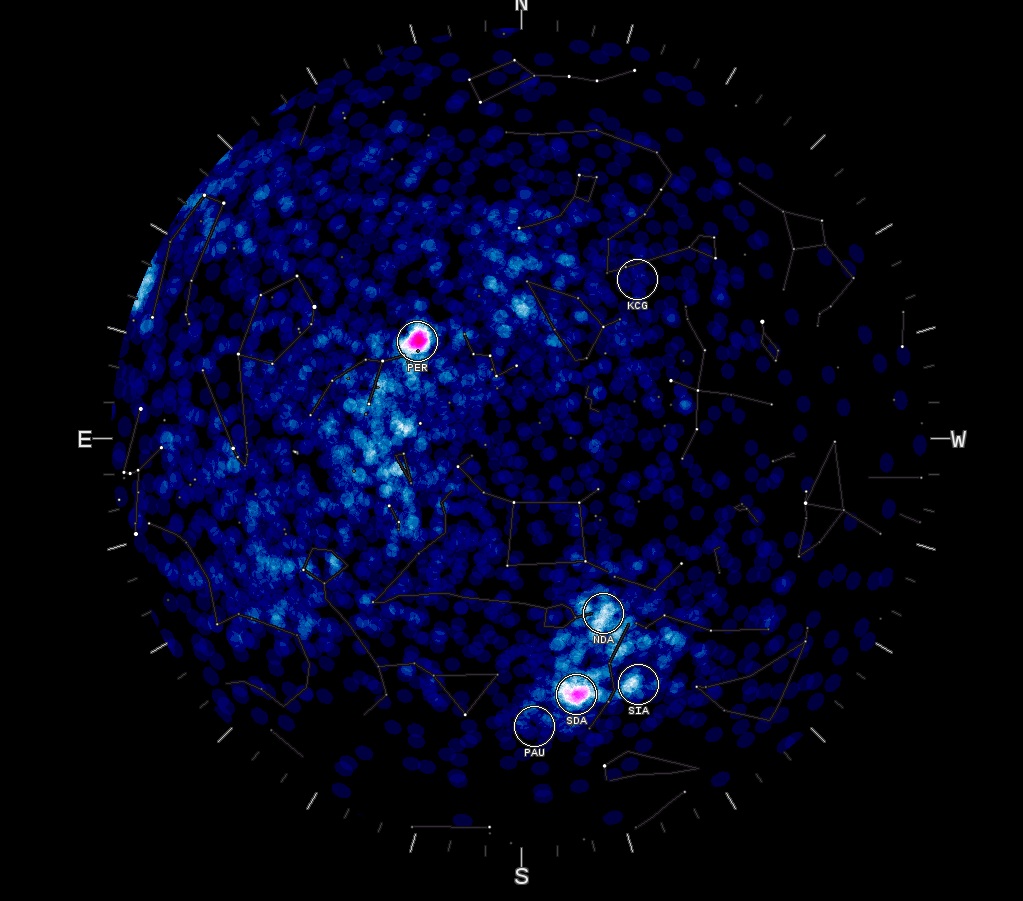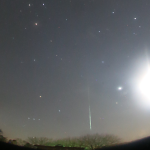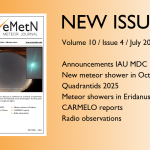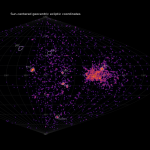The first impressions of the 11-12 August Perseids are being shared via Facebook. We give here some citations from observers who were lucky to watch the 11-12 August Perseid activity:
Koen Miskotte: “Brilliant perseid outburst. 15 fireballs between -4 and -8. 3 X -8. Two peaks around 23h15m and possibly at 2h15m UT. Observed about 600-900 meteors. I don’t know. Maybe more…. We had unexpected very clear weather with lm up to 6.8. Man man man what a show. The best one since 2001…..”
Casper ter Kuile: “Perhaps we did not observe such a nice fireball show but activity was much higher than expected. The first peak we acknowledge but as the radiant was quite low at the sky on La Palma this was not well defined. The second was much more obvious but if we can narrow it to 02h15m UT. But this is all very preliminary. ”
Martin Popek posted impressive pictures on spaceweathergallery.com. In his comment: “Over a thousand by a meteor, clear bolides and multiple when the camera caught per seconds 2-6 meteors. ”
Mariusz Wisniewski posted on Facebook: “Perseids! Within minutes I could see even 7 meteors! We have seen very many bright meteors. There were also several spectacular cases. For example, this time from 1:58 which is slightly weaker from glitter bright moon the whole box!”
Jure Atanackov: “Huuuge Perseid outburst observed!!! Rates the best since Leonid storm in 2002!!! Wow!!!!!”
Karl Antier: “Perseids were sometimes even more active than the last outburst I observed, the 2011 Draconids!”
Japanese radio observers have this activity profile online: http://www5f.biglobe.ne.jp/~hro/Flash/2016/PER/index.html

From Radio Meteor Observatory’s On Line

CMOR radiant concentrations at 2016 Aug. 12 8h UT.






Hello Paul
Do you know of any graphs of meteor counts showing hourly trends that have a higher resolution time scale and more frequent updates than the graph near the top of the page at http://www.imo.net/live/perseids2016/ ?
It would be good to have observations showing trends or graphs at locations around the world where the information updated hourly. That way people would know if it is worthwhile spending time outside to observe them. If we had observations from countries to the East of us, it could help us to decide whether to get up or stay up till the early hours in the morning when it is best to observe them. For example, at 9PM at night, we could look at someone’s observations from a country that is 8 hours East of us, and if the number is well above average, it would be worthwhile going outside just before first light in the next morning. If the number is above average in countries to the East of us like explained above, does it normally mean the numbers will also be above average a few hours later at our location?
I am in Northern Australia, so I wonder if someone’s observations in the USA could give an indication for my area in meteor showers like the Perseids that is predicted to be above average.
It would also be good to have archives of observations numbers from previous meteor showers to help us decide if the imminent one is worthwhile looking at.
I am trying to establish an astronomy group and also a weather organisation. I have a website explaining astronomy at http://tolga.info/astronomy/ and information about my public viewing nights at http://tolga.info/astronomy/astronomyviewingnights.pdf . Are you able to swap links?
I also have many unrelated websites with rare information, new ideas, solutions, inventions and free groups to help many people at http://www.truesolutions.info .
I value any comments and I can also send you a letter to share about any of the specific topics if you are interested.
Your help would be appreciated.
Regards Richard.